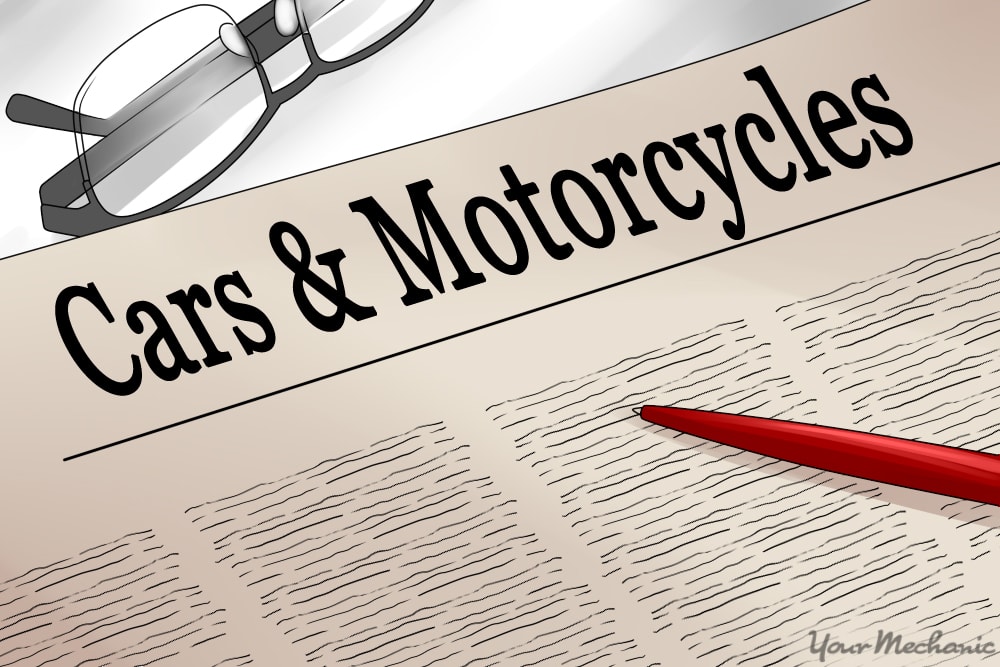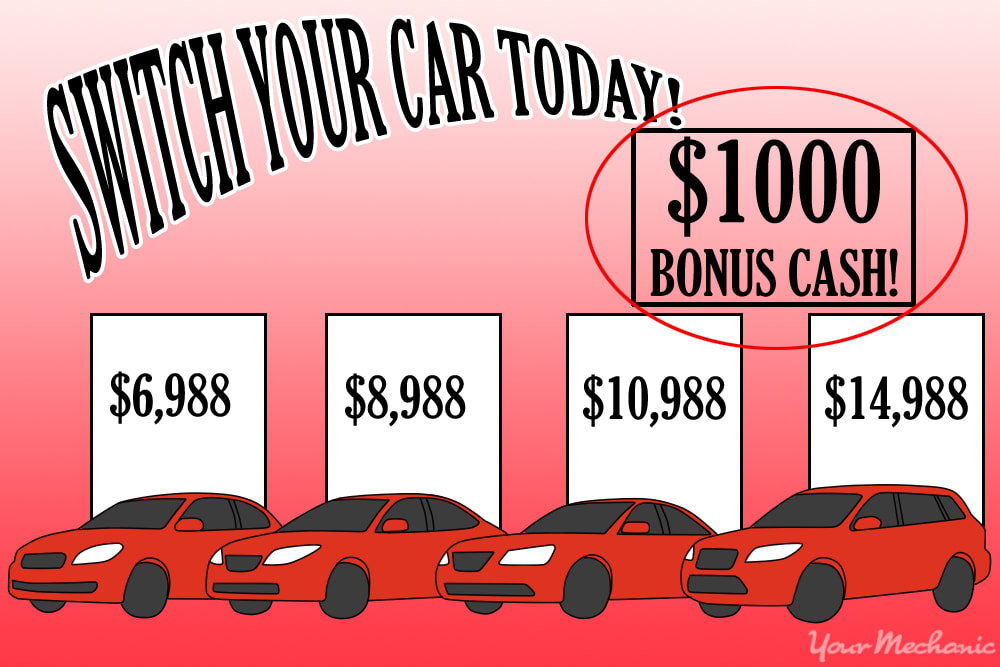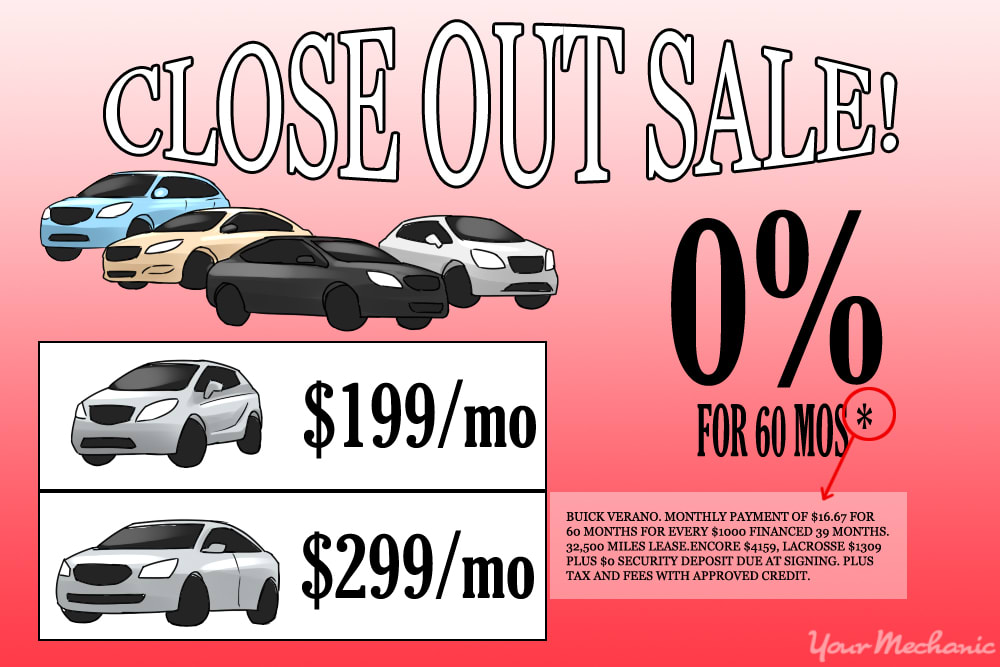

When you are in the market for a used car, you’ll need to sort through advertisements and sales flyers in order to choose the right car for you. Car advertisements include details about the car’s condition and usage, features, accessories, information about the year, make, and model of the car for sale, as well as the selling price and applicable taxes.
Often, when used cars are advertised, the seller wants to garner the most interest in the car as possible, sometimes leaving out important information or making the car sound better than it actually is. There are some common tricks to accomplish this, and knowing what those tricks are can help you avoid a car purchase that could result in problems down the road.
Method 1 of 3: Learn the basic terminology on car ads
Car ads are often short and to the point so they take up less space. Ad space is purchased based on the size of the ad, so the smaller ads cost less to place. That means reducing the wordiness of the ad will reduce the cost of the ad itself. Many words are abbreviated to shorten the ad.
Step 1: Know the powertrain abbreviations. There are many abbreviations for powertrain which will be helpful to know.
CYL is the number of cylinders in the engine, such as a 4-cylinder engine while AT refers to an automatic transmission in car ads. MT indicates the car has a manual transmission, otherwise known as a standard transmission, which is abbreviated as STD.
4WD or 4x4 means the vehicle advertised has four-wheel drive, while 2WD mean is is two-wheel drive. AWD is similar, indicating the vehicle is all-wheel drive.
Step 2: Know the feature abbreviations. The possible features on a car are quite numerous, so mastering them is a way to make searching the classifieds much easier.
PW means the advertised car has power windows while PDL indicates the car is equipped with power door locks. AC means the vehicle is equipped with air conditioning, and PM means the car has power mirrors.
Step 3: Learn the abbreviations for mechanical parts. Again, knowing these abbreviations can help your search.
PB means power brakes, though only classic cars won’t have this feature, while ABS indicates the vehicle advertised has anti-lock brakes. TC means traction control but it may also appear as TRAC CTRL in the ad.
Method 2 of 3: Decipher used car ads from the car dealer
Dealerships that sell used cars also use advertising techniques to get you in the door. That can range from additional offers not related to the car sale itself to dealer fees that increase the sale price without your knowledge. Being aware of some of their tactics will help you accurately read a car dealer’s used car ads.
Step 1: Consider the added incentives. If a used car dealer offers bonus cash or any other incentive, you can be sure they are accounting for the cost of the incentive in the price.
Unless you really want the incentive they are offering, negotiate the sale price for a used car without the incentive included. The price will almost definitely be lower than if the incentive were included.
Step 2: Check for asterisks in the advertisement. If there are asterisks, that means there are additional details that you need to be aware of listed somewhere on the ad.
Typically, you’ll find the additional information in the fine print at the bottom of the page. Those asterisks detail additional fees, taxes, and financing terms, for example. Account for any information in the fine print when making your decision.
Step 3: Analyze the ad’s wording carefully. The ad’s wording may be deliberately obscuring something about the car.
For example,“Mechanic’s Special” indicates that the vehicle requires repairs and may not be roadworthy at all. “Fresh paint job” often indicates collision repairs that have just been completed. “Highway driven” indicates that the mileage is likely higher than average and the seller is trying to make it appear to be less of a factor.
Method 3 of 3: Decipher used car ads from private sellers
Car ads from private sellers are often less detailed than used cars advertised by the dealer. Private sellers may not be crafty salespeople but they can often omit details or embellish them to make the car sound better than it is.
Step 1: Make sure all the basic information is included on the ad. Make sure the year, make, and model is listed and that any associated pictures reflect that it is true.
An ad that displays the trim level of the vehicle advertised is usually even more reliable.
Step 2: Be aware of details that seem out of place. Make sure that all of the details are in accordance with each other and do not seem unusual.
If a car is advertised with new tires but there are only 25,000 miles on it, you can assume either the odometer has been replaced or the car was driven hard. The same can be said for brakes that are new on low-mileage cars.
Step 3: Cautiously approach un-safetied or as-is sales. There are generally reasons why the seller has not performed the necessary repairs or inspections that you need to be aware of.
These cars have either not been inspected and may have repairs needed immediately or they have been inspected and not repaired because the vehicle is either not worth it or the owner can’t afford the repairs.
If you are looking at an as-is sale, you should never pay the same amount as a vehicle that has been certified already.
Step 4: Be aware of rebuilt, salvage, or otherwise branded titles. A car that has a title status that is anything but clean should be advertised as such.
A rebuilt car may have problems that haven’t been fixed and should never be the same selling price as a car with a clean title.
When you are looking for a used car, it can be hard to narrow down which ones you should look at. For a smooth car-buying experience, only look at cars that have lots of detail in the advertisement and seem honest and straightforward. If you feel like you are being swindled, this is probably a good indication that you should step back and give the offer more consideration. Always be sure to have one of YourMechanic’s certified technicians perform a pre-purchase inspection to guarantee that the car is in proper condition.





